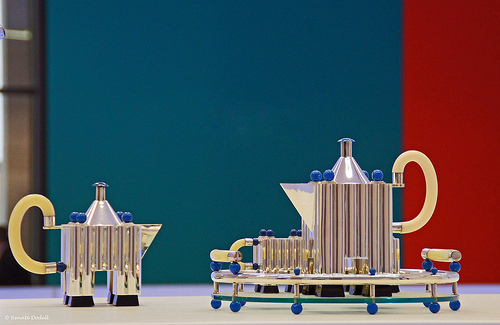 Photo by Renate Dodell [CC]
Photo by Renate Dodell [CC]
Here are my takeaways from a recent McKinsey interview with Alberto Alessi, head of his family’s iconic design factory.
Two ways to get new ideas for new products:
- Come up with a product/service idea internally then brief designers.
- Create a culture that opens you to receive and engage with ideas from outside your organisation.
Craftsmanship/artisanship comes from within, not from market research:
“Imagine Picasso waking up in the 1920s on a nice, sunny morning in a village on the Côte d’Azur and feeling strongly the wish—the need—to start painting. So he starts painting. But he’s not asking himself, “To what target customer will I address my new painting?” Picasso shows us a completely different approach: starting from yourself, as a creator, and using your sensibility and your intuition in order to touch other people’s hearts or sensibility or intuition. And by the way, he also built an interesting business.”
It requires a different, less sterile approach to thinking about your customers:
“I prefer discussing “customer dreams” instead of “the market,” because market is so rough.”
Four parameters to evaluate a product:
- “Oh what a beautiful object” – ability to relate to the user via sensation, memory, and imagination.
- Social meaning – ability to convey the user’s values, status and personality.
- Function
- Price
Note how the first two parameters (central to Alessi) are very humanist and user centric. Mass production and conventional business practice would probably value more the last two parameters (peripheral to Alessi).
Not relying on consumer testing/market research, but “drawing on our [own] experiences”.
Theory of the Borderline – which divides the … “possible” and “not possible”.
A celebration of small and personal care:
“My future is to continue to be a gardener. A gardener has to properly prepare the ground, then plant the seeds, then wait. Then, as the flower appears, a gardener has to take care of it—in a way that will permit it to express its nature, its best possibilities. If I could decide my fate, it would be to have a smaller company than the one I have today. I could take better care of it.”
Read the full article on McKinsey Quarterly. You need to sign up.
Thanks to Bettina for this heads up.